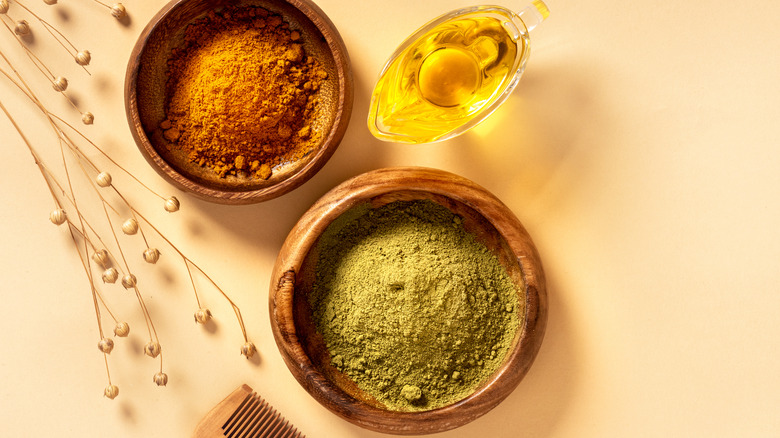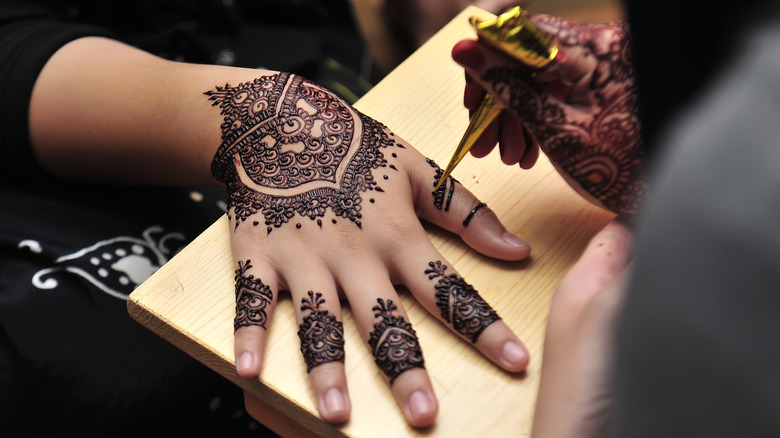How Does Henna Really Work?
It has essentially become a must for every viral TikTok health or beauty trend to involve some obscure ingredient or tool that you don't know much about, but find yourself instantly ordering to try anyway. People will use the strangest things for daily tasks. Who could forget the lube as a makeup primer trend (via Shape Magazine)? Sometimes the trends are more simple and better for you, like drinking lemon water every morning.
Faux freckles have become a beauty obsession over the past few years. From brow pencils, to liners, to even markers — everyone has been using whatever they can think of to achieve a freckled face that looks fresh and youthful, with brands even releasing specialized "Freckle Pens"(via Byrdie). Enter henna. Henna went viral on TikTok for how ideal it is for creating faux freckles that last for a while instead of washing off instantly. The ginger undertone to henna made the freckles look extra real (via Allure). But how does henna actually work?
Henna has benefits beyond temporary art
TikTok users may have considered henna to be the latest unusual ingredient, but it has actually been a staple among Asian and Middle Eastern cultures for many, many years. Coming from the plant Lawsonia inermis, henna is most infamous for the beautiful temporary body tattoos popularly created by Asian and Middle Eastern communities for special occasions. Its use even dates back to the Egyptian pharaohs (via Healthline).
The way that henna works is that it contains natural pigments that temporarily dye the skin or hair into a reddish-orange color (via Medicine Net). Depending on where you apply it, henna can last for up to two weeks.
A popular use for henna is as a hair dye. The natural ingredient can work as a root touch-up, too. Henna is a great alternative to chemical colors, because it's completely natural and actually can help heal your hair. According to Stylecaster, henna simply coats your hair with color, rather than penetrating and potentially damaging it. Asian and Middle Eastern cultures have used it for years as a protective styling method to give hair a color refresh while also repairing and nourishing it.

